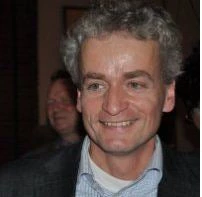 During a
recent study on social inclusion in Poland, one of the main questions our team wanted to answer was: which population groups are socially excluded?
During a
recent study on social inclusion in Poland, one of the main questions our team wanted to answer was: which population groups are socially excluded?
After posing this question to experts from the government and NGOs alike, as well as the local population in different municipalities, we found that there is a large diversity of excluded groups. But what was surprising was the “exclusion traps” some categories of people were caught in.
People addicted to alcohol and children in families with alcohol abusers are an important example of this group. They suffer from multiple intersecting disadvantages including: long-term unemployment, dysfunctional families, domestic violence, depression, and poor health. These problems often form a vicious cycle and reinforce each other - leading to an “exclusion trap” from which it becomes hard to escape.
These groups are also particularly challenging to work with.
While Government experts identified alcohol abusers as an important excluded group, none of the local people in our study agreed with this assessment. In fact, many people made negative comments about this category of socially excluded people and did not feel that these groups deserve any assistance from social programs. This discriminatory attitude towards them by their own communities makes these groups rather ‘invisible.’ This lack of consensus on whether they deserve assistance adds an additional handicap to their situation. Alcoholics also tend to be severely stigmatized by their own communities.
Alcoholism is a widespread and growing problem in Poland. According to the Poland Social Diagnosis report, almost 6.8 percent of the population admitted to abusing alcohol in 2011, compared to 4.4 percent in 2003. It is estimated that 2.5 million people use alcohol in a detrimental manner and the number of addicts in the country exceeds 860,000.
The homeless are another socially excluded group that is ‘invisible.’ There are between 60,000 and 300,000 homeless people in Poland, according to various estimates by NGOs. These people do not appear in official statistics, as they are typically not covered in household surveys, and there are no clear policies targeted at them.
Take Zbigniew, for example – a 46-year-old homeless man who sat for a long interview for our study. Zbigniew is also stuck in an “exclusion trap.” This trap makes it nearly impossible for him to get a job without a legal residence, while he simultaneously struggles to secure a place to live without having a job.
Why are these ‘invisible’ groups unable to benefit from Poland’s post-communist economic ‘miracle’?
What issues need to be addressed to increase inclusion?
With the infusion of €7.3 billion Euros by the European Union (EU) over the next six years to tackle social inclusion, the answer to these questions becomes even more important.
Fortunately, we were able to gain some insight into these dilemmas during focus group discussions with socially excluded people in southeast Poland, led by Jagiellonian University, in 2013. Many of the participants cited multiple disadvantages to inclusion - most often their inability to find employment – and voiced the option that ‘standard’ labor market activation measures were not working so well for them.
Participants highlighted a lack of information about available social support and inclusion programs and how to access these programs. They also underscored the limited responsiveness, lack of goodwill, and unwillingness of local officials and local politicians to listen to their needs. Excluded groups seemed to acknowledge the need to personally get involved in community life to improve their own situation. But trust among community members is low.
So what can be done to help someone like Zbigniew?
The massive EU funds being made available to tackle social exclusion in Poland provide an enormous opportunity to make the Polish economic miracle truly inclusive for all groups. However, in order for this to happen, it will be necessary to follow a new approach while simultaneously scaling up past successes.
Such a new approach should regard social exclusion as a complex phenomenon that cannot be solved by one single measure such as training. It must take a more comprehensive support approach that addresses the intersecting disadvantages that excluded people in Poland face. It should cover ability, opportunity and dignity and look at the complete environment of the excluded individual, including family members and communities. Such an approach should include, among others.
- Multipronged solutions – for someone like Zbigniew for example these could include transitional housing, psychological support, drug and alcohol treatment, and labor market training.
- Increased involvement of excluded people in decision making around the design of adequately-funded programs that aim at addressing their needs.
- “Soft” measures, such as social and cultural activities and psychological support, to break the passive attitude of excluded people, help them take leadership and actively engage in finding solutions to their own problems.
- Tracking progress and strengthening learning from good practices across the country.


Join the Conversation